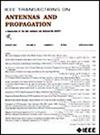形状不确定PEC目标的有效广角/宽带RCS预测方法
IF 4.6
1区 计算机科学
Q1 ENGINEERING, ELECTRICAL & ELECTRONIC
引用次数: 0
摘要
介绍了一种计算雷达横截面(RCS)的多域预测方法(MDPM),该方法跨越频率域、角域和空间(几何形状)域。然后,在标量域内快速得到不确定几何目标的电磁散射特性。与传统的一维估计方法相比,本文提出的方法在标量域和向量域都能实现有效的预测。具体来说,向量域是由模型的点云导出的。表面电流可以用均匀收敛的二元切比雪夫多项式来近似。在以往的研究中,经常用Maehly近似(一种有理多项式)代替Chebyshev多项式来扩大预测范围。然而,由于系数矩阵的奇异性和某些系数的缺乏,这种替换并不总是导致精度的提高。因此,采用经典的切比雪夫多项式方法来提高结果的稳定性和准确性。此外,系数矩阵的计算采用循环索引,从而进一步优化算法框架。该方法不涉及导数计算。该方法不仅简化了求解过程,减少了内存消耗,而且可以计算复杂目标的散射特性。与蒙特卡罗(MC)方法相比,该方法在保证精度的同时显著提高了效率。本文章由计算机程序翻译,如有差异,请以英文原文为准。
An Efficient Wide-Angle/Wideband RCS Prediction Method for PEC Targets With Indeterminate Shape
A multidomain prediction method (MDPM) is introduced for computing radar cross section (RCS) across the frequency, angular, and spatial (geometric shape) domains. Then, the electromagnetic scattering characteristics for targets of indeterminate geometries are obtained rapidly in scalar domains. Compared with the traditional 1-D estimation methods, the proposed method in this article can achieve effective prediction in both scalar and vector domains. Specifically, the vector domain is derived from the point clouds of the model. The surface current can be approximated using a uniformly convergent bivariate Chebyshev polynomial. In previous studies, the Chebyshev polynomial has often been replaced by the Maehly approximation (a rational polynomial) to extend the prediction range. However, due to the singularity of the coefficient matrix and the lack of certain coefficients, this substitution does not always result in increased accuracy. Consequently, the classical Chebyshev polynomial approach is adopted to enhance the stability and accuracy of the results. Additionally, the coefficient matrix is calculated using circular indexing, thereby optimizing the algorithmic framework further. The derivative calculations are not involved in the proposed method. It not only simplifies the solution process and reduces memory consumption but also calculates the scattering characteristics of complex targets. Compared to the Monte Carlo (MC) method, the proposed method can significantly enhance efficiency while ensuring accuracy.
求助全文
通过发布文献求助,成功后即可免费获取论文全文。
去求助
来源期刊
CiteScore
10.40
自引率
28.10%
发文量
968
审稿时长
4.7 months
期刊介绍:
IEEE Transactions on Antennas and Propagation includes theoretical and experimental advances in antennas, including design and development, and in the propagation of electromagnetic waves, including scattering, diffraction, and interaction with continuous media; and applications pertaining to antennas and propagation, such as remote sensing, applied optics, and millimeter and submillimeter wave techniques

 求助内容:
求助内容: 应助结果提醒方式:
应助结果提醒方式:


